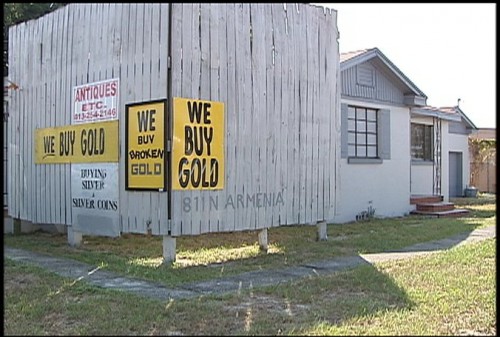A Federal Reserve study released this week says that U.S. household net worth plunged 38.8% from 2007 to 2010, as a result of the housing bubble bursting. What the Fed’s study does not say, of course, is that the Fed itself was responsible for both the housing boom and its inevitable subsequent bust.
Mean vs. Median
 The Fed says that median U.S. household’s net worth declined from $126,400 in 2007 to $77,300 in 2010. Meanwhile, mean net worth fell just 14.7% from $584,600 to $498,800 in the same time. This huge disparity in median and mean net worth – both in raw numbers and in percentage of decline – demonstrates the “crony capitalist” nature of the fiat-money-fueled U.S. economy.
The Fed says that median U.S. household’s net worth declined from $126,400 in 2007 to $77,300 in 2010. Meanwhile, mean net worth fell just 14.7% from $584,600 to $498,800 in the same time. This huge disparity in median and mean net worth – both in raw numbers and in percentage of decline – demonstrates the “crony capitalist” nature of the fiat-money-fueled U.S. economy.
Median net worth refers to the point at which half of households have greater net worth, and half of households have less net worth. Mean net worth is the raw average – total net worth divided by number of households. That the mean is so much higher than the median shows that those with greater-than-median net worth have a lot more net worth. A normal distribution would find the median and mean roughly equal, and these numbers are far from that.
What’s more, the fact that median net worth dropped so much more than mean net worth in the same time shows that households with greater-than-median net worth were insulated from much of the housing crash’s effects. For those who understand the Federal Reserve and its fiat-money fractional-reserve lending system, this isn’t a big surprise.
The Fed’s Redistribution
The U.S. economy is not a real economy. It is fueled by fiat money and debt. The entire system of fractional-reserve lending redistributes wealth from those on the bottom (below the median) to those on the top (above the median). That’s because when banks originate loans, they create up to 90% of the money-to-be-lent out of thin air. This increases the money supply and effectively redistributes purchasing power to the borrower from everyone else. Those at the top qualify for and receive much greater sums of borrowed money than those on the bottom, and thus, this system is actually “reverse socialism” – redistributing wealth from poor to rich.
Now, it is true that people of superior credit quality deserve greater access to credit — but that’s not what this system does. Since most of the money being lent does not yet exist, purchasing power is being redistributed, and this amounts to theft.
In a hard-money, free-market economy, loans would be made out of funds that already existed, and therefore, no redistribution would take place. When someone borrowed money, he would receive a debit and a credit on his balance sheet, whereas the lender would do the same. Under our current system, banks have no real debits, since they are lending money that didn’t exist until they created it out of thin air, but all ledgers have to be balanced, and this balance is achieved by subtracting purchasing power from everyone else.
Phony Economy
Since the U.S. economy is a phony economy, it can also be deduced that there was no real net worth loss between 2007 and 2010 – or at least not as large of a loss as the Fed’s study concludes. That’s because the U.S. had little-to-no net worth in 2007 to begin with. Housing prices were almost entirely illusory, propped up by Alan Greenspan’s printing press and little else. Thus, this study’s real insight is not at how much was lost, but at how great the disparities are, and why these disparities exist at all. In 1992, Bill Clinton’s campaign coined the term, “It’s the economy, stupid.” In 2012 and beyond, we can almost always answer any economic question with, “It’s the Fed… moron!”


